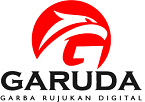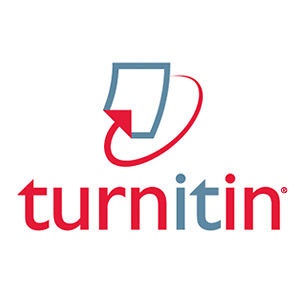Author Guidelines
AUTHOR GUIDELINES
Authors who wish to publish scientific articles in Jurnal Akuntansi Syariah (JAKSYA), should follow the guidelines of writing that can be downloaded below:
- Author Guidelines (in English)
- Author Guidelines (in Bahasa Indonesia)
1. General Guide of Manuscript
The manuscript format could be sent in MS Word.docx or another word version. A submitted manuscript accepted for publication or even published elsewhere is unacceptable and will not be published in Jurnal Dinamika Akuntansi dan Bisnis (JDAB). The manuscript can be written in English or Indonesian, with an abstract in English and Indonesian. Manuscripts sent to JAKSYA will be checked by using Turnitin to detect plagiarism and auto-plagiarism. The manuscript should have less than 40% level of similarty, and more importantly, demonstrates originality.
To facilitate the double-blind peer-review process, each submitted manuscript should be without any infomation about the author(s) and their affiliation.
Academic authors are encouraged to co-author articles with colleagues from other countries and with practitioners.
Authors are encouraged to submit their manuscript online through JAKSYA website. However, manual submission through email (febiiainpsp@gmail.com) is allowed. Within two weeks after the submission, the manuscript will be processed and the author will be informed. If the authors encounter problems while submitting their manuscript, please contact the managerial team (jdab@unsyiah.ac.id).
For further information about online submission, please click JDAB online submission guideline
2. Type of research
JAKSYA receives following types of studies/papers:
- Empirical research: Studies that re-examine important empirical work using alternative theoretical or empirical frameworks, or a different data set. These studies often involve experimental designs and multivariate techniques that examine relationships among variables.
- Literature review: Studies that review and synthesizes the state of art of a particular topic. The reviewed papers should be selected based on a certain systematic method.
- Theoretical research: Studies that test or explore theoretical issues and provide additional insights on the issues
- Case study: Studies that investigate a phenomenon within its real-life context based on an in-depth investigation in order to gain a more comprehensive understanding about the research object.
JAKSYA also welcomes manuscripts that have been presented in a conference that have been substantially revised based on the conference review comments. Please provide the information about the conference in the footnote of manuscript first page.
3. Writing styles and Forms
A manuscript should be typed double-spaced, with a margin of 1.15 inches on all sides. The length of the paper should be between 5,000 and 8,000 words including text, tables, figures, references, and appendices. The manuscript should be typed with Times New Roman 12 pt. font, one column. The title should not exceed 20 words. The right-hand margin should have justified alignment.
Equations must be numbered. Footnotes should not be used for reference purposes and should be avoided when possible. Presented tables and figures within the manuscript, not at the end of the manuscript. Please note that the manuscript will be published in black and white (print), although the online version will contain colorful figures (if any). However, the color print will be available in extreme cases as per the author's request.
4. Manuscript Outline
A manuscript submitted should normally consist of the following sections and should follow the Introduction, Methods, Results, and Discussion system:
- an abstract (between 150 and 250 words) and 4 – 6 keywords
- an introduction (or Pendahuluan that describes state of art, novelty, purpose of study, and paper outline)
- a literature review and hypothesis development section (or Kerangka Teoritis dan Pengembangan Hipotesis)
- a research method section (or Metode Penelitian)
- a result and discussion section (or Hasil dan Pembahasan)
- a conclusion section (or Kesimpulan, Keterbatasan, dan Saran)
- The author may use the acknowledgment section (if any).
- References
5. References
APA reference system must be followed. All references and/or content notes must be placed at the end of the text. Please visit www.apastyle.org to learn more about the APA style. References should be arranged first alphabetically and then further sorted chronologically if necessary. Please ensure that every reference cited in the text is also present in the reference list (and vice versa). Avoid citation in the abstract. Unpublished results and personal communications should not be in the reference list but may be mentioned in the text. Source of a reference as 'in press' implies that the item has been accepted for publication. Authors are encouraged to use reference manager and citation generator, for example, Mendeley, Endnote, etc.
Following are some examples of reference form:
Reference to a journal publication:
Hendricks, K., Hora, M., Menor, L., & Wiedman, C. (2011). Adoption of the balanced scorecard: A contingency variables analysis. Canadian Journal of Administrative Sciences, 29(2), 124–138. https://doi.org/10.1002/CJAS.229
Tahir, F. A. (2017). Exploring the influence of ethical culture and auditor objectivity on auditor integrity among Nigerian auditors : A proposed study. In International Conference on Accounting Studies (ICAS) 2017 (pp. 24–29). Putrajaya, Malaysia: Institute for Strategic & Sustainable Accounting Development (ISSAD). Retrieved from www.icas.my
Hart, L. (2017). How industry 4.0 will change accounting. Retrieved February 18, 2018, from https://www.journalofaccountancy.com/newsletters/2017/sep/industry-4-0-change-accounting.html
Republik Indonesia. Peraturan pemerintah nomor 17 tahun 2010 tentang standar akuntansi pemerintah (2010). Indonesia.
Atkeson, A., Burstein, A., & Chatzikonstantinou, M. (2018). Transitional dynamics in aggregate models of innovative investment (NBER Working Paper Series No. 25321). Cambridge. Retrieved from http://www.nber.org/papers/w25321












